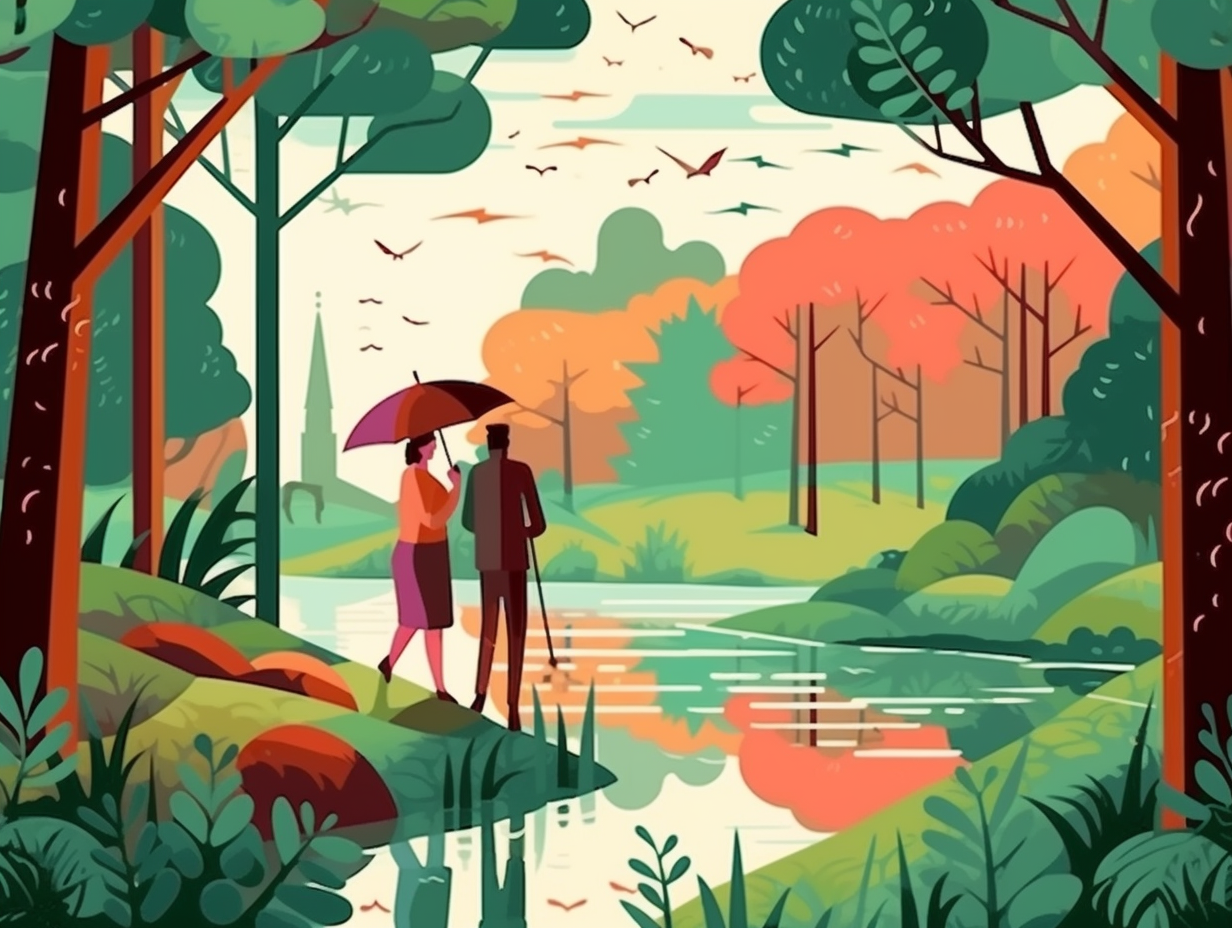Discover the Great Outdoors: 14 Amazing Fun Facts You Never Knew

1. Tree Spa: Forest Bathing Boosts Immunity
Trees ain't just wood you hug, they're a spa too: Forest bathing, known as Shinrinyoku in Japan, has been proven to increase natural killer (NK) activity and other immune-boosting properties in humans that can last for over 30 days after a visit, whereas touring a city doesn't offer such benefits.
Source => ncbi.nlm.nih.gov
2. Vitamin-Sea: Beach Living Health Benefits
Ahoy, beach bums and sun worshippers! Here's a nugget of wisdom for those of you riding the vitamin-sea: Living near the beach provides a treasure trove of health benefits including increased Vitamin D levels from basking in the sun's generous rays, cancer-fighting fresh sea air that also douses cholesterol flames, and an instant "ocean therapy" session for stress relief as you ride the soothing wave of nature's symphony. Plus, the coastal areas' mild weather keeps you in shipshape all year round, boosting your overall well-being with a wave of outdoor activities.
Source => moving.tips

Did you know bears have an incredible sense of smell and can be attracted to your campsite by the faintest food scent? Learn how to avoid a beary uninvited guest with proper food storage and disposal tips.
=> Fun Facts about Camping
3. Tree Hugs: Outdoor Immune Boosters
If trees could talk, they'd be sneezing compliments at you: Spending time outdoors, especially among our leafy friends, has been proven to boost your immune system by reducing stress and inflammation, as well as improving respiratory health, thanks to that fresh lungful of forest air.
Source => ncbi.nlm.nih.gov
4. Bird Dialects: Regional Avian Arias
Prepare to be a-twitter: Birds have their own language lessons and lyrical locations, with regional dialects being all the rage in the tuneful world of avian arias! Seriously speaking: Birds develop regional dialects in their songs, influenced by environmental factors, and this "learned oral tradition" can boost their mating prospects and allow for more complex interactions, but human-induced habitat loss could silence these unique dialects forever.
Source => cnn.com

5. Star-Abbreviations: 88 Official Constellations
Gather 'round, stargazers and celestial enthusiasts, for an astronomy-themed scoop that will have you Constellaughing out loud: The International Astronomical Union (IAU) recognizes a whopping 88 official constellations spanning the entire celestial sphere, with roots in ancient Mesopotamian and Greek cultures, and the southern skies mapped out by European astronomers – all tied together with official three-letter abbreviations to keep things star-spangled chic!
Source => en.wikipedia.org
6. Mushroom Roulette: Toxic Forest Delicacies
Mushrooms: nature's magical, yet risky, delicacy! Though they may lure you in with their curious shapes and tempting aroma, these sly forest dwellers harbor potentially treacherous secrets: not all mushrooms are edible. In fact, some varieties can be dangerously toxic to both humans and animals if unwittingly ingested, making it essential to know your shrooms before indulging. When in doubt, 'shroom safely and simply admire from afar.
Source => science.anu.edu.au
7. Tree Bodyguards: Windbreak Energy Saving
Ever thought about planting a row of bodyguards around your home to fend off chilly intruders, provide visual and auditory privacy, and save on your energy bills? We're talking about trees, of course: Planting a windbreak with trees and shrubs can reduce heating costs by lowering wind chill near your home, decrease wind speed for a distance of up to 30 times the height of the trees, and offer sound, sight, and smell protection while also providing shade during the summer and creating wildlife habitats.
Source => energy.gov
8. Moss & Lichen: Nature's Air Filters
Did you hear about the moss and lichen stand-up duo? They've got some killer material when it comes to cleaning the air: Mosses and lichens are natural air filters that capture trace elements like heavy metals from the atmosphere, helping scientists monitor these pollutants and promoting clean technologies. Since they have underdeveloped roots, they absorb nutrients directly from the air – a sucker for polluted punchlines!
Source => theconversation.com
9. Ant-gonauts: Desert Ant Navigation
You can call them Ant-gonauts because these masters of navigation and their six-legged space crafts are traversing the final frontier – up, across, and down the sandy dunes: Desert ants in the Sahara employ path integration and some funky leg math to accurately calculate their distance and direction traveled, allowing them to return to the nest sans any environmental markers, proving again that Mother Nature knows how to throw a directional curveball.
Source => blog.cambridgecoaching.com

10. Frog Makeovers: Colorful Courtship Rituals
In a dating scene that could rival the flashy contestants on The Bachelor, the humble frog undergoes quite the makeover to woo its lovely lady of the lily pad: During breeding season, males of at least 178 frog species undergo a temporary color change, taking on vibrant hues that act as a visual language to signal potential mates and avoid conflicts. The exact reasons behind these amorous amphibian antics remain a bit murky, but researchers plan to dive into frog vision to help unravel the mystery of their color-changing courtship rituals.
Source => si.edu
11. Desert Plants: Drought Dormancy Heroes
When life gives you deserts, make desiccation-ade: Some plants have the incredible ability to enter a state of drought dormancy, shedding leaves to preserve water in their stems and reawakening with a splash of rain, while others develop extensive root systems to tap deep into the soil for that precious H2O.
Source => desertmuseum.org
12. Bowerbird Bachelor Pads: Love Nests
Step aside MTV Cribs, it's time for Bowerbird Bachelor Pads: When it comes to impressing the ladies, these male satin bowerbirds know how to strut their stuff, decking out their love nests with shiny blue parrot feathers and dazzling trinkets to make their hearts soar. But age before beauty, ladies: studies reveal that while younger female bowerbirds may swoon at the sight of a sapphire-studded bower, their older and wiser counterparts prefer to be wooed by a top-notch serenade and killer dance moves, proving these Casanovas of the avian world cater to a diverse range of tastes in their quest for love.
Source => science.org
13. Pacu Fish: Creepy Vegetarian Chompers
Much to the dismay of dentures everywhere, the Pacu fish have won the competition for the creepiest chompers in the animal kingdom: But fear not, for these toothy aquatic wonders are actually friendly vegetarians, munching on nuts, fruits, and plants with their eerily human-like teeth.
Source => everywherewild.com
14. Rooster Ruckus: All-Day Crowing
If you thought your rooster neighbors were "morning people", you might want to reconsider your choice of camping companions: these feisty fowl actually crow throughout the day to establish dominance, alert their flock to potential threats, or warn of looming danger, sometimes at a rate of every half hour, depending on the individual and circumstances!
Source => almanac.com










